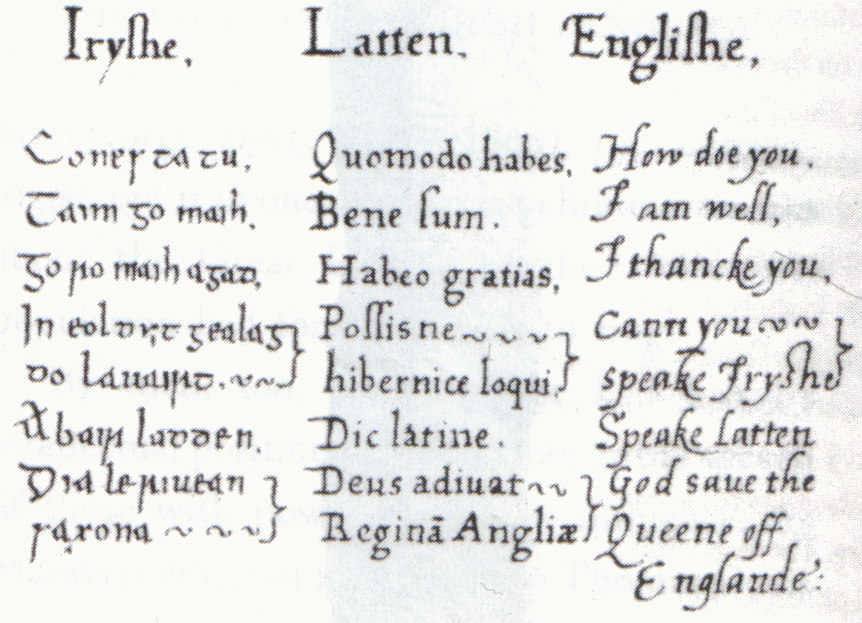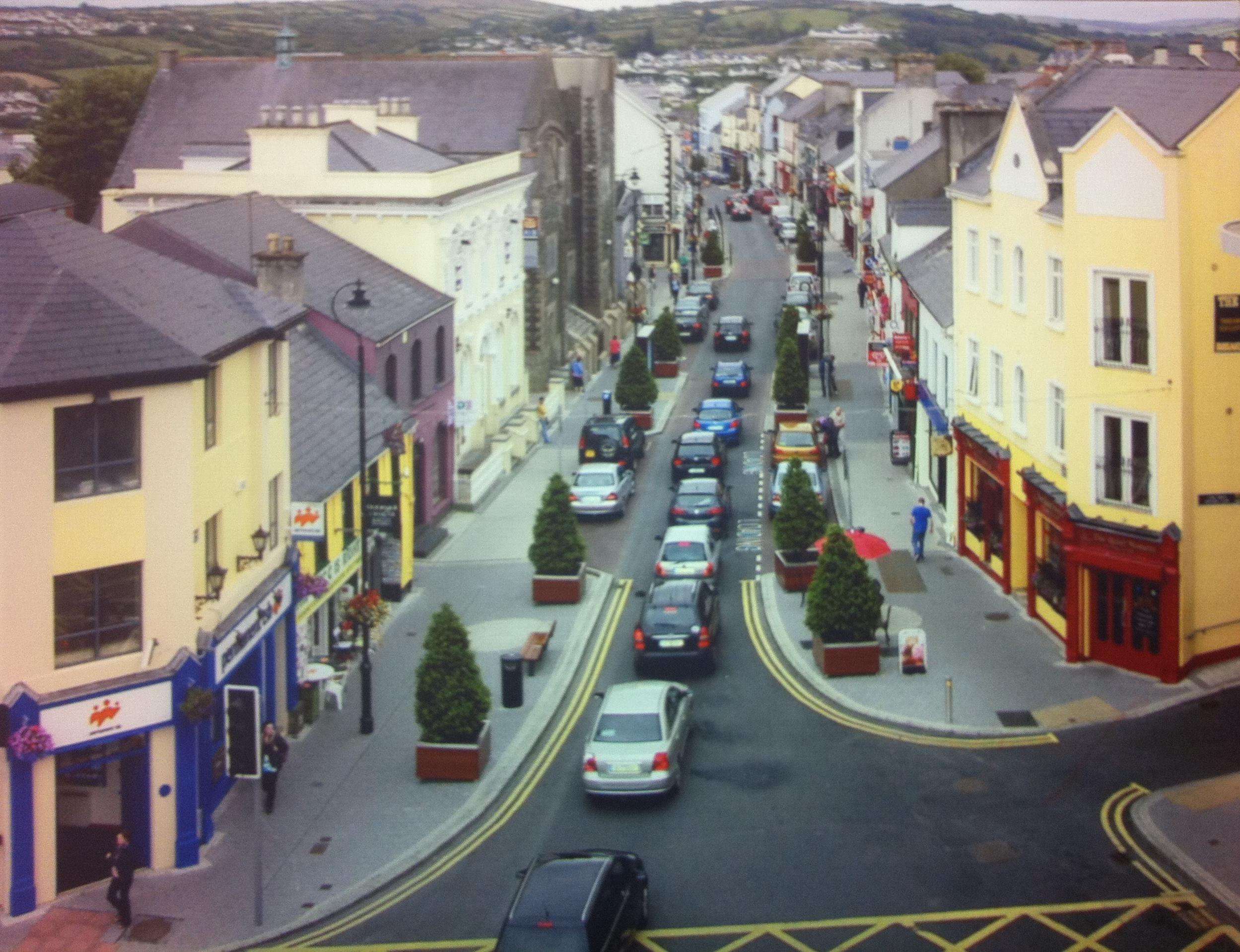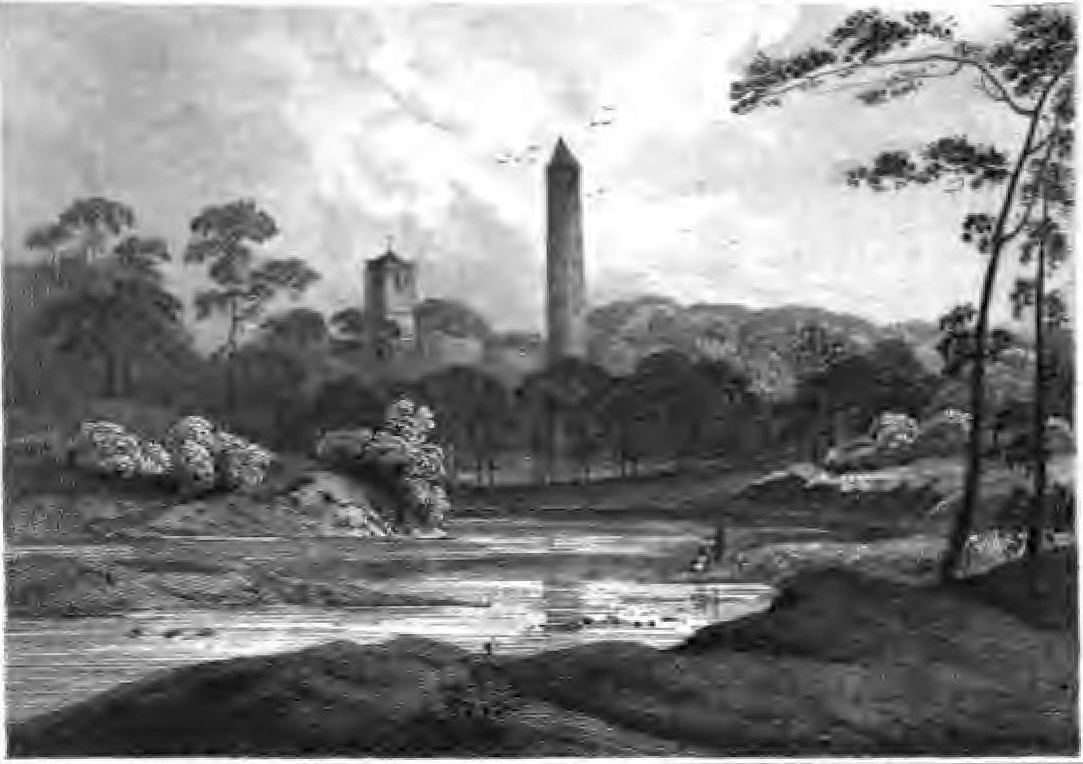|
Líonraí Gaeilge
Líonraí Gaeilge is the Irish language term for ''Irish Language Networks''. The Gaeltacht Act 2012 (Republic of Ireland) allowed for the formal designation by Foras na Gaeilge and the Irish Department of Media, Tourism, Arts, Culture, Sport and the Gaeltacht of certain areas as ''Líonraí Gaeilge'' or ''Irish Language Networks'', outside the traditional Irish-speaking areas collectively known as the ''Gaeltacht''. This would be done where the Irish language seemed strong enough to justify it. In February 2018, Foras na Gaeilge announced that five areas - The Gaeltacht Quarter in West Belfast, Loughrea, Carn Tóchair, Ennis and the Dublin suburb of Clondalkin Village - were to be designated as the first Líonraí Gaeilge, subject to the committees in the networks co-formulating and adopting approved Irish language plans. Foras na Gaeilge have said that they expect to also designate other areas outside the Gaeltacht as Líonraí Gaeilge. See also * Gaeltacht Irish speaki ... [...More Info...] [...Related Items...] OR: [Wikipedia] [Google] [Baidu] |
Irish Language
Irish ( Standard Irish: ), also known as Gaelic, is a Goidelic language of the Insular Celtic branch of the Celtic language family, which is a part of the Indo-European language family. Irish is indigenous to the island of Ireland and was the population's first language until the 19th century, when English gradually became dominant, particularly in the last decades of the century. Irish is still spoken as a first language in a small number of areas of certain counties such as Cork, Donegal, Galway, and Kerry, as well as smaller areas of counties Mayo, Meath, and Waterford. It is also spoken by a larger group of habitual but non-traditional speakers, mostly in urban areas where the majority are second-language speakers. Daily users in Ireland outside the education system number around 73,000 (1.5%), and the total number of persons (aged 3 and over) who claimed they could speak Irish in April 2016 was 1,761,420, representing 39.8% of respondents. For most of recorded ... [...More Info...] [...Related Items...] OR: [Wikipedia] [Google] [Baidu] |
Ennis
Ennis () is the county town of County Clare, in the mid-west of Ireland. The town lies on the River Fergus, north of where the river widens and enters the Shannon Estuary. Ennis is the largest town in County Clare, with a population of 25,276, making it the 6th largest town, and 12th largest urban settlement, as of 2016. Dating from the 12th century the town's Irish name is short for ' ("island of the long rowing meadow") deriving from its location between two courses of the River Fergus. Ennis has had considerable success in the Irish Tidy Towns competition. In 2005 and 2021, the town was named Ireland's tidiest town, and was named Ireland's tidiest large urban centre on multiple occasions. History The name Ennis derives from the Irish word "Inis", meaning "island". This name relates to an island called ' ("Calf Island") or ' ("island of the long rowing meadow") formed between two courses of the River Fergus. The history of Ennis is closely linked with the O'Brien dyn ... [...More Info...] [...Related Items...] OR: [Wikipedia] [Google] [Baidu] |
Scottish Gaelic
Scottish Gaelic ( gd, Gàidhlig ), also known as Scots Gaelic and Gaelic, is a Goidelic language (in the Celtic branch of the Indo-European language family) native to the Gaels of Scotland. As a Goidelic language, Scottish Gaelic, as well as both Irish and Manx, developed out of Old Irish. It became a distinct spoken language sometime in the 13th century in the Middle Irish period, although a common literary language was shared by the Gaels of both Ireland and Scotland until well into the 17th century. Most of modern Scotland was once Gaelic-speaking, as evidenced especially by Gaelic-language place names. In the 2011 census of Scotland, 57,375 people (1.1% of the Scottish population aged over 3 years old) reported being able to speak Gaelic, 1,275 fewer than in 2001. The highest percentages of Gaelic speakers were in the Outer Hebrides. Nevertheless, there is a language revival, and the number of speakers of the language under age 20 did not decrease between the 2001 and ... [...More Info...] [...Related Items...] OR: [Wikipedia] [Google] [Baidu] |
Irish Language Outside Ireland
The Irish language originated in Ireland and has historically been the dominant language of the Irish people. They took it with them to a number of other countries, and in Scotland and the Isle of Man it gave rise to Scottish Gaelic and Manx, respectively. In the late 19th century, English became widespread in Ireland, but Irish-speakers had already shown their ability to deal with modern political and social changes through their own language at a time when emigration was strongest. Irish was the language that a large number of emigrants took with them from the 17th century (when large-scale emigration, forced or otherwise, became noticeable) to the 19th century, when emigration reached new levels. The Irish diaspora mainly settled in English-speaking countries, chiefly Britain and North America. In some instances the Irish language was retained for several generations. Argentina was the only non-English-speaking country to which the Irish went in large numbers, and those emigra ... [...More Info...] [...Related Items...] OR: [Wikipedia] [Google] [Baidu] |
Irish Language In Northern Ireland
The Irish language ( ga, Gaeilge) is an official language in Northern Ireland. The Irish language is the second most spoken language in Northern Ireland. The dialect spoken there is known as Ulster Irish (''Gaeilge Uladh''). Protection for the Irish language in Northern Ireland stems largely from the European Charter for Regional or Minority Languages. According to the 2011 UK Census, in Northern Ireland 184,898 (10.65%) claim to have some knowledge of Irish, of whom 104,943 (6.05%) can speak the language. Some 4,130 people (0.2%) use Irish as their main home language. History Language in Gaelic Ireland As in other parts of Ireland, Irish was the main language in the region of present-day Northern Ireland for most of its recorded history. The historic influence of the Irish language in Northern Ireland can be seen in many place names, for example the name of Belfast first appears in the year 668, and the Lagan even earlier ("Logia", Ptolemy’s ''Geography'' 2,2,8). The Pla ... [...More Info...] [...Related Items...] OR: [Wikipedia] [Google] [Baidu] |
Neo-Gaeltacht
A Neo-Gaeltacht ( ga, Nua-Ghaeltacht) is an area where Irish has a strong presence as a spoken language but is not part of the officially defined or traditional Gaeltacht areas. It has been argued that non-Gaeltacht activist groups wishing to establish an Irish language community need to show that it is large, permanent and formally organised and that it has a growing number of people using Irish as their first language. Another objective is a situation in which children use Irish among themselves and with other Irish speakers in a natural way while being able to deal with a largely English-speaking world. Under the Gaeltacht Act 2012 the Republic of Ireland's Department of Tourism, Culture, Arts, Gaeltacht, Sport and Media has said that areas outside the traditional Gaeltacht areas may be designated as Líonraí Gaeilge/Irish Language Networks, subject to them fulfilling particular criteria. In 2018 Foras na Gaeilge announced that Carn Tóchair in County Londonderry was going to ... [...More Info...] [...Related Items...] OR: [Wikipedia] [Google] [Baidu] |
Bailte Seirbhíse Gaeltachta
''Bailte Seirbhíse Gaeltachta'' is the Irish language term for ''Gaeltacht Service Towns'', whose designations were legislated for under the Gaeltacht Act 2012. Gaeltacht Service Towns are towns situated in or adjacent to Gaeltacht areas in Ireland, that have a population of over 1,000 people, and which play a significant role in providing public services, recreational and commercial facilities for Gaeltacht residents. History In 2016 it was announced that Galway City, Dingle and Letterkenny would be the first designated Gaeltacht Service Towns subject to local networks co-formulating and adopting approved Irish language plans in conjunction with Foras na Gaeilge and Údarás na Gaeltachta. Cork City, Macroom, Belmullet, Ballinrobe, Clifden, Cahersiveen, Navan and Athboy have also been mentioned by the Dept. of the Gaeltacht as possible towns which may become Gaeltacht Service Towns. In August 2020 the Department of Media, Tourism, Arts, Culture, Sport and the Gaeltacht ann ... [...More Info...] [...Related Items...] OR: [Wikipedia] [Google] [Baidu] |
Clondalkin
Clondalkin ( ; ) is a suburban town and townland west of Dublin city centre, Ireland, under the administrative jurisdiction of South Dublin. It features an 8th-century round tower that acts as a focal point for the area. Clondalkin is in the Dáil constituency of Dublin Mid-West. Clondalkin is also the name of a civil parish in the ancient barony of Uppercross, and is also used in relation to some local religious parishes. History Prehistory Neolithic tribes first settled in the area around 7,600 years ago, taking advantage of the site's favourable location on the River Camac, overlooking the River Liffey and the inland pass between the mountains and the river. Evidence of the presence of the Cualann Celtic people (an early tribe possibly noted on as the Cauci on Ptolemy's world map) can be found in various mounds and raths. Christian era Clondalkin is believed to have been founded by Saint Cronan Mochua as a monastic settlement on the River Camac over 1,400 years ago (po ... [...More Info...] [...Related Items...] OR: [Wikipedia] [Google] [Baidu] |
Carn Tóchair
''Carn'' is the official magazine of the Celtic League. The name, a Celtic word which has been borrowed into English as 'cairn', was chosen for its symbolic value and because it can be found in each of the living Celtic languages. The subtitle is: 'A Link Between the Celtic Nations'. Overview Founded in 1973, ''Carn'' is dedicated to highlighting and furthering the aims of the Celtic League, including language preservation and self-determination for the Six Celtic Nations. The articles are published in English, with articles also in the six Celtic languages: Breton, Cornish, Irish, Manx, Scottish Gaelic, and Welsh, with translations and summaries in English. In the past, articles have also appeared in French. Notable contributors have included the Scottish Gaelic poet Sorley MacLean. The cover of the magazine for a number of years has been a map showing the various Celtic countries, notated with their names in their respective native languages. Editors The editors ... [...More Info...] [...Related Items...] OR: [Wikipedia] [Google] [Baidu] |
Gaeltacht Act 2012
The Gaeltacht Act 2012 ( ga, Acht na Gaeltachta 2012) is an Act of the Oireachtas of Ireland. The Act redefined the traditional Irish-speaking areas or ''Gaeltacht'' in the Republic of Ireland on linguistic criteria instead of on geographic areas which had been the position until 2012. While the traditional ''Gaeltacht'' boundaries still exist the Act sets out ways where areas outside the ''Gaeltacht'' can be formally designated as Líonraí Gaeilge (Irish Language Networks) and Bailte Seirbhísí Gaeltachta (Gaeltacht Service Towns). In 2016 it was announced that Galway City, Dingle and Letterkenny would be the first recognised Bailte Seirbhísí Gaeltachta under the Gaeltacht Act 2012 subject to them adopting and implementing approved language plans. In February 2018 the Department of Arts, Heritage and the Gaeltacht and ''Foras na Gaeilge'' announced that five areas - The Gaeltacht Quarter in West Belfast, Loughrea, Carn Tóchair, Ennis and Clondalkin Village - were going to b ... [...More Info...] [...Related Items...] OR: [Wikipedia] [Google] [Baidu] |
Loughrea
Loughrea ( ; ) is a town in County Galway, Ireland. The town lies to the north of a range of wooded hills, the Slieve Aughty Mountains, and the lake from which it takes its name. The town's cathedral, St Brendan's, dominates the town's skyline. The town has increased in population in the late 20th and early 21st centuries. Although the town also serves as a commuter town for the city of Galway, it also remains an independent market town. Loughrea is the fourth most populous settlement in County Galway, with a population of 5,556 as of 2016. Name The town takes its name from ''Loch Riach'' (Irish Riach being a variant of 'Riabhach' meaning grey/ speckled) The town is situated on the northern shore of the lake. The lake's Irish name is used in the name of the local Irish-language multi-faith primary school: Gaelscoil Riabhach. The town is located within an area that was historically called Trícha Máenmaige. History Pre-Norman The town is located within an area that was his ... [...More Info...] [...Related Items...] OR: [Wikipedia] [Google] [Baidu] |
Gaeltacht Quarter, Belfast
The Gaeltacht Quarter ( ga, An Cheathrú Ghaeltachta ) in Belfast, Northern Ireland, United Kingdom is an area surrounding the Falls Road in the west of the city. A Gaeltacht is an area where the Irish language is spoken. Unlike the traditional Gaeltacht areas in the Republic of Ireland, Belfast's Gaeltacht Quarter does not have legally defined geographical boundaries. The Quarter serves as a socio-linguistic hub focused on the Falls Road/Andersonstown Road corridor in the west of the city, and aims to promote Irish language and Irish culture in the area and to develop associated tourist attractions. Since the 1989s the Irish language has been statistically stronger in Belfast (especially in the west of the city) than anywhere else in Northern Ireland. The city has witnessed a steady growth of active English-Irish bilingualism, concentrated in the electoral wards in the west of the city. According to the 2021 census, out of the 333,748 people residing in Belfast city, 15.5% of p ... [...More Info...] [...Related Items...] OR: [Wikipedia] [Google] [Baidu] |

.jpg)






